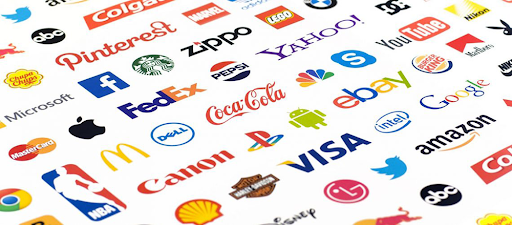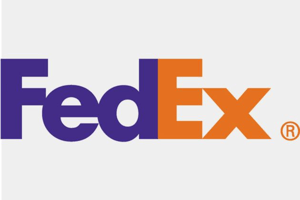 If you own or work at a business, you’ve most likely heard of a style guide or brand guide. If you’re in a Marketing or a Design Department, these are crucial pieces in ensuring your company’s brand consistency. Conversely, if you’re in a Finance or Sales Department, you may be familiar but “really have no need for it.” Albeit, the latter may have less of a need, but it is crucial for any organization to not only have a style or brand guide to abide by. So what’s the big deal?
If you own or work at a business, you’ve most likely heard of a style guide or brand guide. If you’re in a Marketing or a Design Department, these are crucial pieces in ensuring your company’s brand consistency. Conversely, if you’re in a Finance or Sales Department, you may be familiar but “really have no need for it.” Albeit, the latter may have less of a need, but it is crucial for any organization to not only have a style or brand guide to abide by. So what’s the big deal?
The Big Deal.
To understand the importance of a style or brand guide is first to understand what it is. For years, we’ve referred to these guides with several different names, so what is the difference between a style guide and a brand guide? Nothing.
Yes, it’s a little anticlimactic to get the difference defined finally and ultimately, they’re the same thing. It’s just a matter of preference. So for our purposes, we will refer to this guide as a “brand style guide.”
Now that we’ve landed on a naming convention let’s look at why a brand style guide is a big deal.
Imagine that every day you dressed differently, spoke with a different accent, had a different demeanor, and when you finally got to work, you sat in someone else’s cubicle. This would confuse your coworkers daily since you’re constantly changing how you are identified by skewing your personal brand every day.
Now imagine that an established company like FedEx did this?
Randomly changing out their iconic purple and orange for green and brown, changing their tone and voice daily or even allowed the separation of the “Fed” and the “Ex” logo. It would just be confusing for everyone.
This is why it’s crucial to define what your brand is and what elements make it. Once you identify them, you need to communicate them to your business. Enter the brand style guide.
What is a Brand Style Guide Made Up Of?
A brand style guide communicates the look and feel of your overall brand. This will vary from company to company.
Larger corporations will inherently have more extensive brand style guides due to the sheer amount of channels that they market and advertise within.
If you’re a smaller company, don’t feel the pressure to develop a 140-page brand style guide, it will be an exercise in futility and quite frankly, a waste of time. You need to “right-size” your brand style guide for the size of your company.
Here are some great examples of brand style guides, and below are some basics that your brand style guide should include.
- Mission Statement, Vision Statement, and Core Values
- Logotypes & Usage
- Colors
- Typography
- Tone & Voice
Mission Statement, Vision Statement, and Core Values
Your mission statement, vision statement, and core values are what drive your brand. They are what shape who you are, what you do, and why you do it.
Establishing these in your style guide can have a significant impact on your brand recognition.
If you’re a relatively new company or don’t have all these elements fleshed out yet, that’s ok. Every brand evolves over time, so if you’re missing any of these elements, add them to the next revision of your brand style guide.
Use the brand style guide as the catalyst for defining these elements.
“ TOMS' mission is to help improve lives through business; it’s a core value and is embedded in everything we do. We believe in partnering with others who share these values and who conduct business ethically. “
Logotypes & Usage
Your company’s logo is how people recognize your brand, so you have to make sure that it is being used correctly. Most people that will use your logo are not maliciously trying to misuse your logo.
Simply put, most people (including employees of your company) aren’t designers and don’t pay attention to the visual details, which is why it’s paramount to have logo usage defined in a clear and easy-to-understand way.
One suggestion is to have in addition to a brand style guide is to create a “quick use guide” which covers logo usage, colors, and fonts since this is 90% of the reason why we reference the brand style guide in the first place. Make it easy for the end-user, and you will significantly increase your odds that your identity is represented correctly, which in turn helps your brand.
Make sure to let people know when and where to use your logo. Full color, black or white logos tend to be easier to use, but you have to define how they get used.
For example, you could provide a vendor a reversed out (white) logo, but your company may never want it placed on a red; you have to let the vendor know this. Or if your logo is unreadable at a particular size, you have to define what to do in that situation.
Color
Define your colors. The internet makes it easy for people to “color-pick” your corporate colors, but depending on where they “pick” from your brand, the color could be off.
Additionally, depending on the software you are using when you “convert to another color mode,” it might not be an exact match.
Make sure you include PMS (Pantone), CMYK, RGB, and HEX colors, this will ensure that you have the right color every time. Here’s a great resource for color conversion from Pantone.
Additionally, list secondary colors that your brand is identified by and how you want these colors to be used.
Typography
Another critical aspect of your style guide is typography. Today, more than ever, it’s essential to define your fonts.
Why? With the advent of the web, it’s easier to find a template or use an existing font you happen to have on your laptop.
Typography can be as iconic as a color or a logo. What do you think would happen if Times New Roman was substituted for Dunkin’ Donuts (now Dunkin’) typeface?
Letting the user know the type of font you’re using upfront will help maintain brand consistency and make it easier all around. Be sure to include typography usage as well. What typeface and fonts do you use? And what sizes and weights are appropriate for different headers to be (H1, H2, etc.)?
Tone & Voice
The overall tone and voice that your brand uses impacts all of your marketing and communications efforts.
Try to maintain consistency in your brand personality, and this will make your brand more memorable. The best brands stay front of mind because their presence is defined by the repetition of the same logo, fonts, colors, and images.
A Brand Style Guide by Any Other Name
So whether you still decide to call it a “Style Guide,” “Brand Guide” or “Brand Style Guide” the key takeaway here is to have a guide that defines all the aspects of your brand and one that is accessible and easy-to-use.
You know your company, maybe you are better off with a printed and bound document, a pdf or an online version for easy access—or perhaps all three!
Ultimately, you want your brand style guide used by anyone who is going to be handling your brand elements. These simple steps will have a significant impact on your overall brand.






